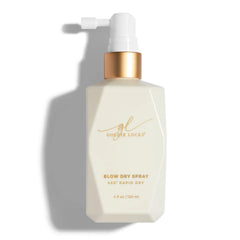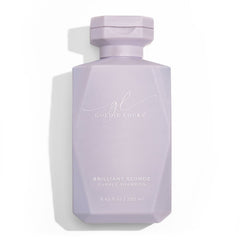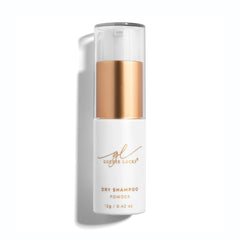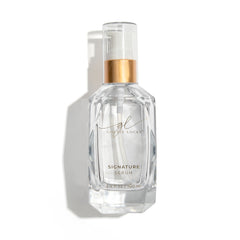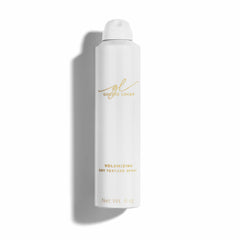We’ve been conditioned (no pun intended) on what ingredients are bad for hair and which products to stay away from. However, from a formulation standpoint, there are variables that can increase or reduce the risk of some of the previously red flagged ingredients we’ve become accustomed to reading about.
The dangers of some ingredients have changed over time as scientific research, as well as independent research, has busted some of the myths about potentially harmful hair care ingredients.
If we look at hair for what it is, there are a multitude and complex structures with unique chemical and physiological behavior that is different for each individual.
On the most basic level, hair is created internally underneath your scalp and once it has grown out it no longer has absorption capabilities to reach your blood supply. The exceptions are scalp treatments as well as shampoos that have direct scalp contact.
Index
- What ingredients are bad for hair?
- Sulfates
- Are parabens bad for hair?
- Is fragrance bad for hair?
- Which alcohol is bad for hair?
- Silicones
- Silica for hair
- Is silicone quaternium bad for hair?
- Does dmdm hydantoin cause hair loss?
- Is pvp bad for hair?
- Is amodimethicone bad for hair?
- What is dimethicone?
- Methylchloroisothiazolinone and Methylisothiazolinone for hair
- Is propylene glycol bad for hair?
- What is PEG in hair products?
- Is cocamidopropyl betaine bad for hair?
- Does formaldehyde cause hair loss?
- Aluminum
What Ingredients Are Bad For Hair?
- Sulfates
- Formaldahyde
- Parabens
- Denatured Alcohols (in high amounts)
- Phthalates
- DMDMh (formaldahyde releasers)
- PPD Para-Phenylenediamine
Why Do Ingredients Get a Bad Reputation In Haircare?
There are a few reasons why ingredients get a bad reputation in haircare.It could be that an ingredient gets flagged in cosmetics in general, which in some products has direct contact with your skin. A brand that uses too much of that ingredient may reach toxic levels.
Another possibility is that the ingredient is formulated with another ingredient which amplifies its properties, bringing out the worst reaction.
Regardless of where bad reputations come from, an ingredient may have it for a reason. That being said, some ingredients aren’t as harmful as some articles you may have read in the past say.
Let’s dive into some ingredients that carry a stigma to find out more about their characteristics.
Sulfates
Are Sulfates Bad For Hair?

Sulfates are salts from sulfuric acids. They are made to be degreasers, detergents and other types of cleansers.
They are really good at their job of cleaning, in fact they’re too good. It is one of the reasons they have a bad reputation in hair care, because we noticed it cleanses too much of the scalp and hair and doesn't leave anything good behind—not to mention the almost immediate hair color fading that happens.
Sulfates are extremely common. Even if you are using a sulfate free shampoo, you will likely find sulfates in your laundry detergent, dish soap, face products and even some toothpastes.
Note: there aren’t many health concerns when it comes to sulfates, instead you need to be conscious of how clean, or dehydrated you are willing your hair to get when it comes to shampoo.
Is Ammonium Lauryl Sulfate Bad For Hair?
While ammonium lauryl sulfate is water soluble it still contains the same characteristics as a harsh cleanser.
When using hair products with (ALS) you will find that it will dehydrate your strands making them feel brittle, become weak and lead to breakage.
Is Sodium Sulfate Bad For Hair?
Sodium lauryl sulfate is an effective solution to get surface areas clean which is why it is most common to see this ingredient in household cleaning products.
When this cheaper and exceptionally effective ingredient is found in your shampoo you are guaranteed a great cleanse at a price. The anionic emulsifying cleanser will strip away essential hydration leaving your hair feeling dry, brittle, prone to breakage and looking dull.
Are Parabens Bad For Hair?

Parabens are an integral part of your cosmetic and hair formulations, as a widely used preservative that keeps things like bacteria and fungus from growing in your product.
While there is much controversy about parabens present day, it is linked to independent researchers who felt that too much exposure to parabens can disrupt your endocrine system and may lead to cancer(s).
While scientists have yet to back the independent study, it quickly gained a negative reputation.
Hair care and cosmetics brands have since discovered different avenues in preserving your products without the use of parabens.
Is Fragrance Bad For Hair?

Depending on how your fragrance is sourced or manufactured, it could pose an issue for your hair in how it may affect dryness of the hair itself. Because fragrance is regulated to have less than a 1% presence in most personal care cosmetic formulations it would not be the sole cause of your hair to dry out.
However, if you reach for a perfume bottle that contains different alcohols along with your fragrance it may negatively affect your hair’s hydration because of the higher concentrated levels of direct fragrances.
Which Alcohol Is Bad For Hair?
Not all alcohol is bad for your hair, in fact, long chain alcohol is actually beneficial for your hair because of the smoothing properties it can provid
Short chain alcohol’s like Alcohol Denat, Benzyl, Ethanol, Ethyl, Isopropyl, Isopropanol, Propanol, will help push out excess moisture in the hair and evaporate quickly. While this is beneficial in some hair care products, an over usage of alcohol will dry your hair out over time, especially those with naturally dehydrated hair.
Silicones
Are Silicones Bad For Hair?
![]()
Silicones can be broken down into several different categories. Not each silicone is treated the same way because believe it or not, they all have a different job to do.
Silicones are hybrids of inorganic and organic and have a heat resistance polymer that actually comes from crystal quartz or silica.
While some silicones can be rinsed by water only, the non-water soluble “bad” silicones can still be shampooed out to avoid getting stuck with an ingredient build-up.
Silica For Hair

Silica is a common name we see from the family of silicones and are found in sandstone, beach sand and other natural substances. No matter the silicone it is likely it started with silica.
Silica is colorless and is an important trace mineral in your body. It helps with connective tissue and your flexibility. You can supplement silica to ensure you have a proper amount of trace minerals in your body for healthy hair, teeth and bones.
However when silica mixes with certain metals or minerals you can create different characteristics of this ingredient.
With this, silica is extremely healthy for you internally as well as for your overall hair health.
Is Silicone Quaternium or Glycidoxy Dimethicone Crosspolymer Bad for Hair?
Silicone quaternium is a water dispersible silicone, meaning it can easily wash off and not cause any build up. It is often used in hair care to give you that soft to the touch, illuminating shine while protecting your hair color. Because this ingredient can attach to weak points in the hair (temporarily) it also helps you comb or brush through the tangles a lot easier.
Does DMDM Hydantoin Cause Hair Loss?

DMDMh is a preservative and antimicrobial ingredient found in cosmetics and food.
The controversy surrounding DMDMh is the fact that it does release formaldehyde in order to keep the contents fresh.
While there is no study to connect DMDMh to hair loss, when exposed to greater amounts those with skin sensitivities may experience irritation or contact dermatitis.
Is PVP Bad For Hair?
PVP/VA copolymer is a resin based ingredient that is most commonly found in hair products that provide a hold.
It can be formulated in numerous ratios that can enhance or decrease the hold factor in products like hair sprays and styling creams that provide hold.
It is a synthetic ingredient sourced through petroleum and does not directly link to harmful side effects. Though some may experience irritation to their skin or scalp when exposed to PVP in excess amounts and or time.
Is Amodimethicone Bad For Hair?
Simply put, amodimethicone gets attracted to the part of your hair that needs it most while recruiting a positive charge on your hair (which reduces friction and unwanted frizz).
It also helps your hair stay hydrophobic, which is a good thing. It helps your hair to release unwanted water through your hair strand as quickly as it can.
Remember, the longer your hair stays wet, the weaker it stays. For most hair types dry hair is the strongest.
Healthy hair is naturally covered in a layer that is hydrophobic but the more you expose your hair to color, highlights, or heat, that layer gets worn down and increases the chances of you developing breakage and or split ends.
Amodimethicone only attaches itself to the areas of your hair that need it most.
What Is Dimethicone?
![]()
Dimethicone is an easy googled word but there are about 62 dimethicone cross polymers that exist (remember, not all silicones are treated equal).
To keep it simple, dimethicone can be found in thickening up a product, film forming, hair conditioning, skin conditioning, emollients, adding slip, and viscosity (how thick or thin a product is from liquid to cream).
While we can dream of how many ways dimethicone can be used we need to look at the overall connection it has with its fellow ingredients. Let’s say a product was to “cement” your cuticle down and it also used dimethicone, that would be a red flag for us.
On one hand, it is trapping in moisture and hydration yet it is not allowing any more to enter. Which means over time you could be slowly leaking hydration with minimal efforts to replenish.
Let’s say the dimethicone is paired with amodimethicone and its job is to detangle, make your hair soft, protect your hair from water and add a protective layer to your hair. The characteristics of dimethicone have now shifted slightly to becoming a pro versus a con.
Dimethicone can be one of the most controversial cousins to silicone simply because there have been claims that it could be an environmental toxin if you are using this ingredient in excess. Yet scientific research has no proof against it. This now becomes an open discussion, of ultimately trusting the manufacturers in your hair care, skin care, make-up, lotion, or anything that helps your hair feel soft and supple.
Keep in mind: Dimethicones are hydrophobic and absorb better on virgin hair rather than mid strands through ends
Methylchloroisothiazolinone and Methylisothiazolinone for hair
We know they are a tongue twister and they always show up in pairs, so we will refer to them as M&M.
In short, M&M is a preservative that protects your water based products from growing bacteria, yeast, and fungus. These ingredients have been red flagged because most industries use them, and if you ingest them in high amounts you can see skin and eye irritations.
One of the larger industries that use them is actually in the food industry (which is why there is an emphasis on ingesting this ingredient).
Much like a lot in our lives, too much of something can be negative while if you are using just enough or lower amounts than recommended (and not swallowing it) you would generally be ok.
So How Much Methylchloroisothiazolinone and Methylisothiazolinone Is Safe To Use?
In the Cosmetic Ingredient Review these ingredients are allowed if you are using 8-15 parts per million (ppm) or less. If you read M&M on your labels be sure they are near the bottom if not the last of your ingredient list.
Is Propylene Glycol Bad For Hair?
Propylene Glycol has received a bad reputation without specific fundamental truth. Essentially this product got a bad reputation because it became an ingredient in other products outside of the cosmetic industry.
It is a safe synthetic and is completely water soluble so it will not build up on the hair. In fact, those who are exposed to propylene glycol for long periods of time, still seem to not react negatively to it.
It is commonly used in haircare for the benefits of its humectant properties that will attract good moisture to the hair and keep hydration levels steady.
What Is PEG In Hair Products?

PEGs are found in hair care due to the frizz fighting benefits it provides, as well as the ability to cut through oil and are water soluble which will prevent PEG silicones from building up on the hair.
Other benefits of PEG ingredients are the ability to soften the hair and emulsify or the products ability to mix without clumping.
What Do PEGs Do To Your Hair?
PEGs are used widely in cosmetics and in hair care for its ability to soften hair making it more manageable and to create the emulsifying or mixing of the product so it does not clump.
PEGs also offer hair benefits like frizz control.
Is Cocamidopropyl Betaine Bad For Hair?
Coconut as a close relative still sheds a bit of difference with cocamidopropyl betaine. As a thick fatty ingredient that helps boost foam or lather in shampoo’s brands have taken to this ingredient as an alternative surfactant.
Cocamidopropyl betaine can be safe for use when measured and used properly in ratio and give the user a thicker creamy texture.
When exposed to large amounts of this ingredient there have been signs that link to skin irritation and contact dermatitis.
Does Formaldehyde Cause Hair Loss?
Formaldehyde has been a key focal point for those experiencing hair loss and using products with formaldehyde.
While studies link this ingredient to skin irritations and scalp irritation it could raise a disruption on the dermis of the scalp increasing chances of hair loss as well as higher allergic reactions to the skin.
Studies are still taking place to substantiate these claims.
Aluminum
Is Aluminum Bad For Hair?
Aluminum salts have been introduced into your body one way or another through vaccines, diet, drinking water, cosmetics, or general exposure.
While research never stops on whether or not aluminum can put you at a higher risk of breast cancer, Alzheimer's disease, and/or cysts, this ingredient is on our red flag list that we may want to avoid to be on the safe side.
While aluminum can be a hero called into action to soak up or prevent excess sweat and oils, it is one ingredient that the potential side effects may outweigh the benefits it could bring to you and your personal care regime.
Final Words
When it comes down to ingredients it can be a complicated two edged sword. As we have reviewed, some ingredients don’t cause a direct health concern but will vary with hair type or hair needs, while some red flagged ingredients just need to find the right ingredient or “friends” to ensure they are influenced to do a job well.
In closing, if you are using products with silicones, be sure you use a shampoo that can wash it away and allow you to start fresh each time you suds up.
Become more aware of the brands you are working with because we now know that a little or a lot of something will truly make a difference for each hair type. If you spot a questionable ingredient it’s always best to reach out to the company rather than go down a google black-hole.









